What is Account-Based Marketing on LinkedIn? A Proven Framework for 2025
Quick Links
Account-based marketing (ABM) has long been a valuable tool in any B2B marketer's arsenal given it can yield up to 50% higher ROI compared to traditional campaigns.
LinkedIn, in particular, supercharges ABM campaigns by offering the ability to pinpoint exactly who you want to display personalized ads to.
Instead of going broad and casting a wide net (like Meta's demographic or location-based targeting criteria), LinkedIn lets you run campaigns to people at a specific company. You can target decision-makers who have the final say on whether they invest in your product.
Yet many B2B companies get bogged down by complex processes and frameworks that ultimately have the opposite effect on conversions.
I've built a playbook that any company can succeed with, and it's already generated millions of dollars in pipeline over the past few months.
This article shares a simple breakdown of what I've learned running ABM campaigns on LinkedIn at multiple high-growth SaaS companies, both in-house and as a consultant-so you can replicate it for your own LinkedIn ABM strategies.
What is account-based marketing on LinkedIn?
Account-based marketing (ABM) is a strategy that targets specific companies through LinkedIn ads, as opposed to any brand that fits your buyer persona.
Let's put that into practice and say you're running ABM campaigns for a video hosting platform. Instead of casting this wide net through your ad targeting criteria:
- SaaS companies with $5M+ in annual revenue
- Based in North America
- Job roles: head of video marketing, VP of product, or content manager
An ABM campaign on LinkedIn would target a particular set of accounts that fit your ICP. You can deliver specific content and reference their pain points in the campaign's messaging. It's this type of personalization proven to drive up to a 25% lift in revenue, with a wide net that doesn't exhaust your ad budget but also reaches the 5% of the market who are ready to buy at any given time.
Benefits of account-based marketing on LinkedIn
Account-based marketing on LinkedIn offers the following benefits:
- Ability to target specific audiences. LinkedIn is the most-used social network for B2B professionals. The platform makes it easy to target people at specific companies, which is the foundation of ABM. You can reach the small subset of the market that's ready to buy at any given time.
- Increase pipeline conversions. Gartner found that ABM strategies can increase pipeline conversion rates by 14%. Organizations also experienced an overall lift in account ABM strategy.
- Boost customer value. ABM on LinkedIn isn't just for acquiring new customers. Granular company-based targeting means you can upsell, cross-sell, and retain existing customers to boost customer lifetime value. This can reduce the pressure on marketing to consistently acquire new leads or customers.
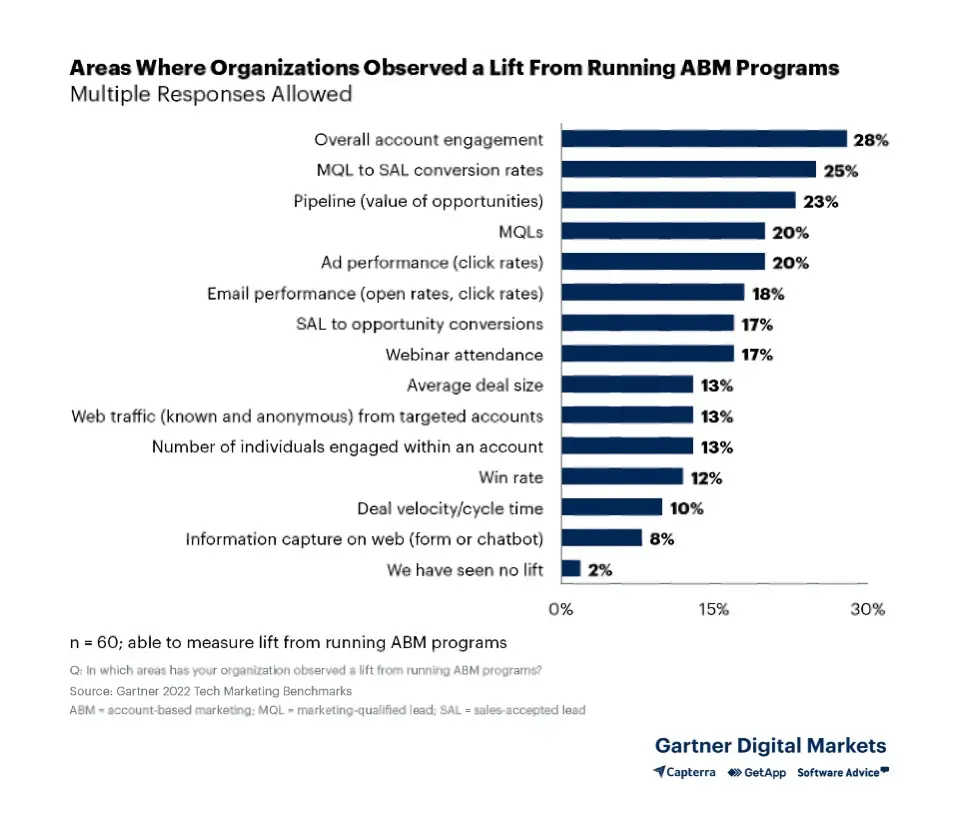
The ABM framework for LinkedIn
Starting ABM from zero is a daunting place to be. If you want to start small, succeed, and scale up using LinkedIn, this framework is for you.
1. Align sales and marketing with an ICP
LinkedIn ABM focuses on targeting high-value accounts with personalized campaigns-something that can only work when both departments are on the same page.
Your efforts will be diluted if either department has a different idea on what a good lead looks like. So, before progressing, define your ideal customer profile (ICP), including:
- Firmographics: industry, company size, growth stage, annual revenue, etc.
- Behavioral signals: intent data, engagement with your website, recent job postings, etc.
- Pain points and purchase motivations
- Stakeholders involved e.g. Head of Marketing or CTO
Use this ICP to create a shortlist of desired accounts with an account intelligence tool like Cognism.
Push this list into your CRM so that every interaction you have with a buyer is documented for both sales and marketing to see. (This solves a challenge that 40% of businesses face with ABM: gathering account and contact data.)
The ultimate outcome is a win-win for everyone involved: sales should feel like marketing is actually investing money into it; marketing should get the sense that sales is going after the leads they've worked hard to generate.
2. Pick one main channel and execute
Full scale ABM campaigns span multiple channels. But if you're just starting out and opting for simplicity, pick one main channel to execute there.
LinkedIn is a great option given the fact that most B2B professionals are active on the platform. Its advertising tools also let you target individuals working at companies shortlisted on your CRM account list.
Here's how to run a campaign using this data:
- Open the LinkedIn Campaign Manager and confirm the Insight Tag is installed on your website. This will ensure that any on-site behavior can be tracked and attributed back to your LinkedIn ads.
- Determine a bid type and budget. You can run campaigns on LinkedIn for as little as $10/day.
- Define your target audience. Name the company you're targeting and enter the job titles from your ICP document. Alternatively, upload your own custom list of at least 300 members, or sync your account list with LinkedIn's CRM integration
"If you are running ads targeting a persona that's not your own, you MUST spend a significant amount of time researching and truly understanding their day-to-day activities," says Adam Holmgren. Holmgren. "Join sales calls, listen to sales calls, conduct interviews, etc. This is CRITICAL before even considering running ads."
⚡️Pro tip: Instead of creating new ABM campaigns from scratch, refine top-performing creatives. Test the waters with organic posts, then turn those with the highest engagement into thought leader ads to demonstrate credibility to your account list.
3. Operationalize your intent signals
Intent signals are clues that tell you where a customer is in the sales funnel.
Start with an arbitrary threshold for what qualifies as intent. Is it:
- When someone visits your website?
- Visits a product demo page?
- Views a pricing page?
Fibbler lets you add extra context to those intent signals. You can push ad engagement data-including impressions, clicks, and ad engagements at a campaign-level-to your CRM, so you can attribute intent signals to specific LinkedIn campaigns.
Build a scoring system where interactions with greater intent get a heavily weighted score. A website visit should carry more weight than a single ad engagement.
Using this scoring system, the account owner should identify key contacts within engaged accounts and start conversations. Tie those chats back to your campaign.
If they visited your product demo page off the back of a video ad profiling a case study of a customer who reduced their tax liability by 30% with your software, for example, BDRs could reach out with a free calculator to help them assess how much they could save too.
⚡️Pro tip: Over time, refine "intent" based on feedback you've collected. For example, you might initially think that someone who attends a webinar is further along the sales funnel. After sales speak to those leads, they discover most attendees just wanted to shortlist options to present to stakeholders. Webinar attendance might not signal as high intent as you initially thought, therefore it has less weight in the scoring system.
4. Run bi-weekly feedback meetings
As soon as the first signal is sent, organize a meeting between marketing and sales. Discuss the quality of sales conversions and campaign performance, then use this insight to tweak your LinkedIn ABM campaigns going forward.
For example, the sales team might share that leads from a recent ABM campaign targeting healthcare CIOs are highly engaged initially but often drop off after the first call. Marketing digs into the campaign content and realizes the messaging focuses heavily on technical product features, but doesn't address pain points of that ICP, such as regulatory concerns or ROI.
With this insight, marketing revamps the campaign to include case studies showing compliance success and cost savings. Sales is given new enablement materials tailored to the same pain points.
The result: a noticeable increase in leads progressing to later stages in the funnel because the lead's experience was consistent throughout the funnel.
5. Track leading and lagging metrics
Gartner reports that 42% of businesses say measuring the effectiveness of their ABM programs remains a significant hurdle. Leading and lagging metrics simplify the reporting process while shedding light on the success of your campaigns.
Set up an account-level dashboard in your CRM to track:
- Leading metrics: These are early predictors of success, such as website visits, ad impressions, and ad engagements. All of these KPIs should trend upward over time as your LinkedIn ABM strategy evolves.
- Lagging metrics: These KPIs reflect previous activity and strategies, including pipeline and ARR generated from target accounts.
⚡️Pro tip: Use Fibbler to see who's viewing your LinkedIn ads, and send this data directly to your CRM on autopilot. This helps paint the bigger picture of how your ABM campaigns influence sales and pipeline.
Challenges with ABM on LinkedIn
ABM teams tend to fall short with their LinkedIn campaigns if they fall victim to one of these issues:
- Overcomplicating your strategy. I'd estimate that 90% of ABM programs fail because they're too complex. A simple framework, like the one above, removes the fluff and makes it easier to align your team and measure results. Being laser focused on getting results removes all of the guesswork that tends to slow ABM teams down.
- Focusing on too few accounts. Remember: just 5% of companies are in the market to buy at any given time, so avoid restricting yourself from the get-go. Spread the net wide and double down once you see buying intent.
- Starting with tools, not processes. It's very common for companies to buy ABM tools like 6sense or Demandbase without actually having a framework in place. The result? Losing a lot of money and not making any progress towards revenue.
- Improper attribution. Companies continue to be obsessed with attribution; they still have goals for X amount of pipeline and the percentage of revenue that should derive from marketing vs. sales. But with LinkedIn ABM, we all work together. We all target the same accounts… And we all should get credit for it.
LinkedIn ABM strategy: a case study
It's great to tell you about the framework I've built, but even better to show you in action.
At Rillion, where I'm the director of demand gen, we've implemented this exact playbook-starting with a LinkedIn advertising campaign that targets our accounts.
Each creative is made with input from both sales and marketing based on insights we've learned about buyers from both ends:
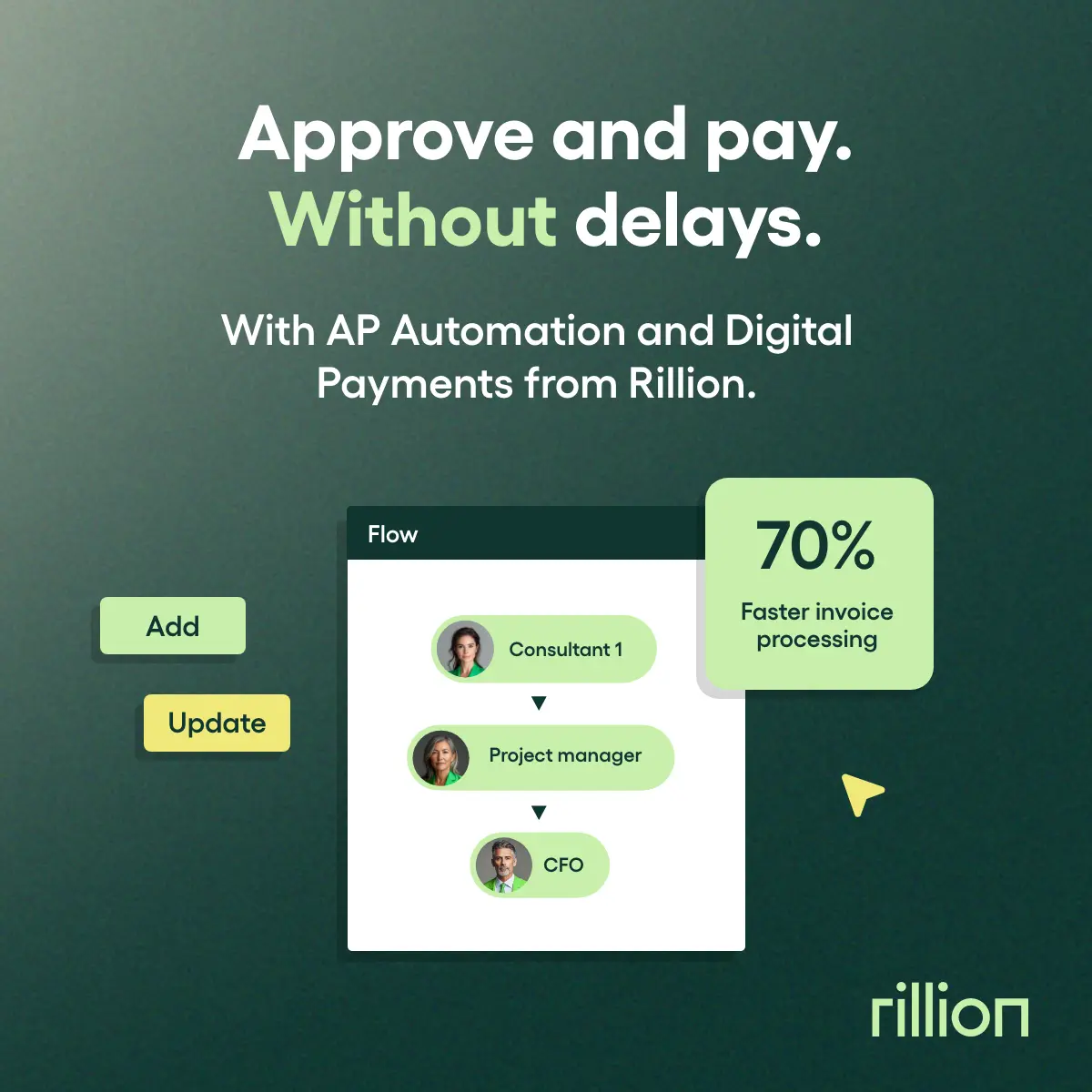
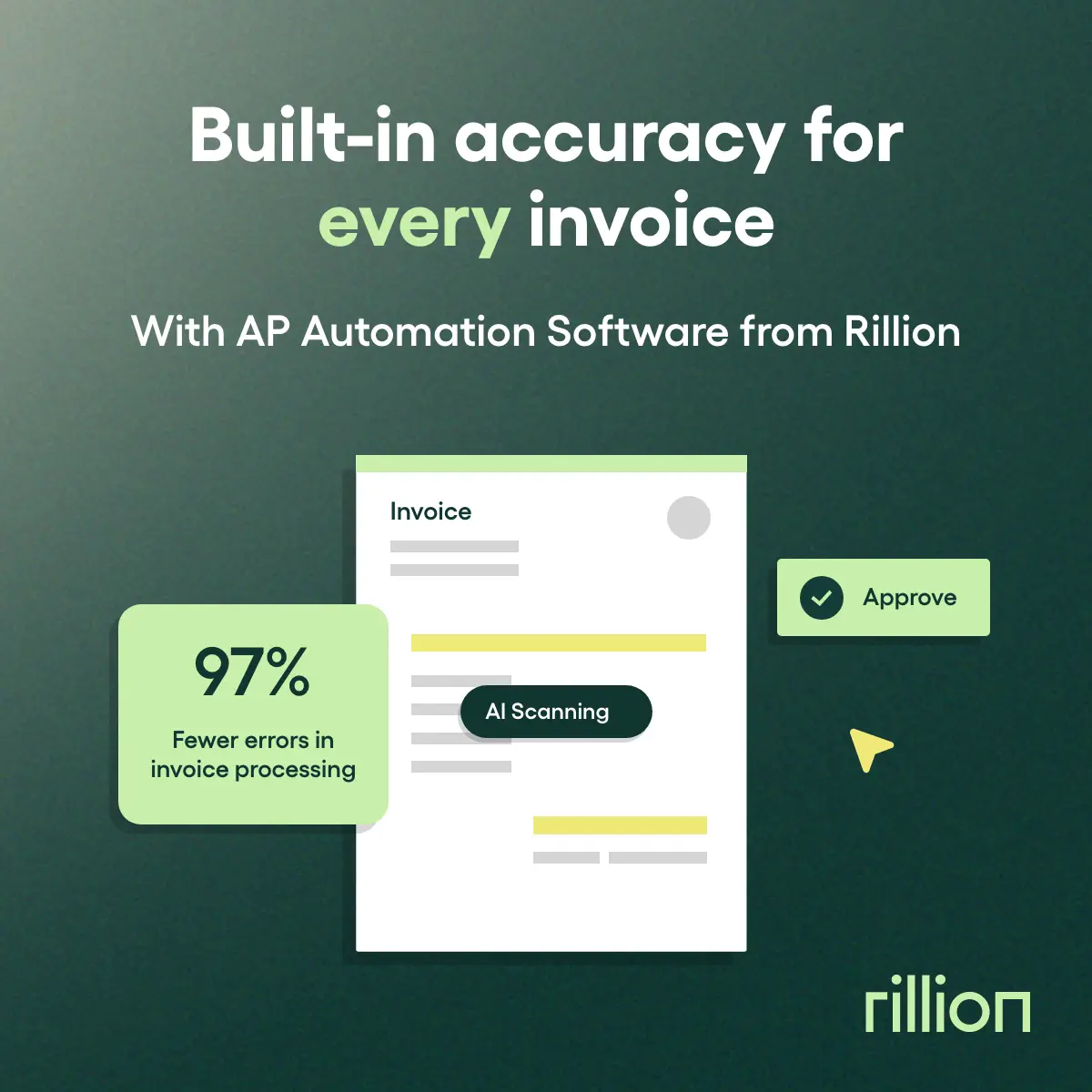
Once these campaigns start to reach target accounts, intent signal data feeds back to our CRM.
We use account scoring method to help us prioritize which leads are further along the funnel, including:
- LinkedIn engagement, where data is pulled from Fibbler and given a weighted score of 10
- G2 buying intent, which has a weighted score of 60
- Website signals (e.g. visits), with a weighted score of 30
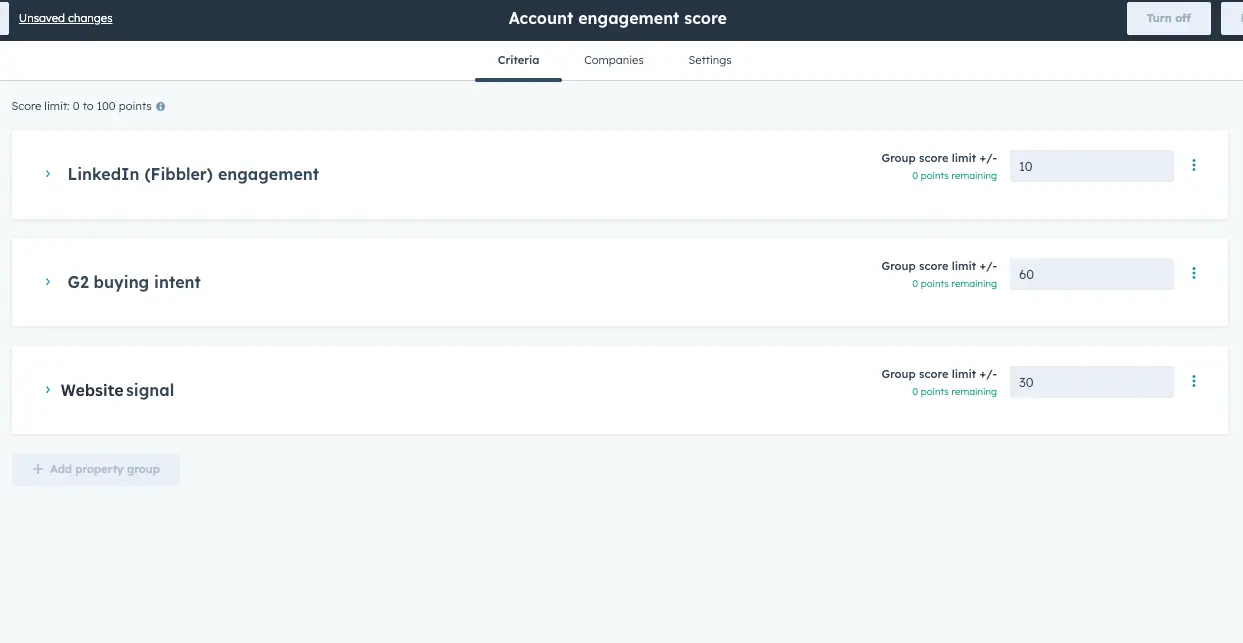
Tasks are assigned to BDRs when leads reach a certain threshold, as this indicates that the prospect is further along the funnel and likely more receptive to sales outreach:
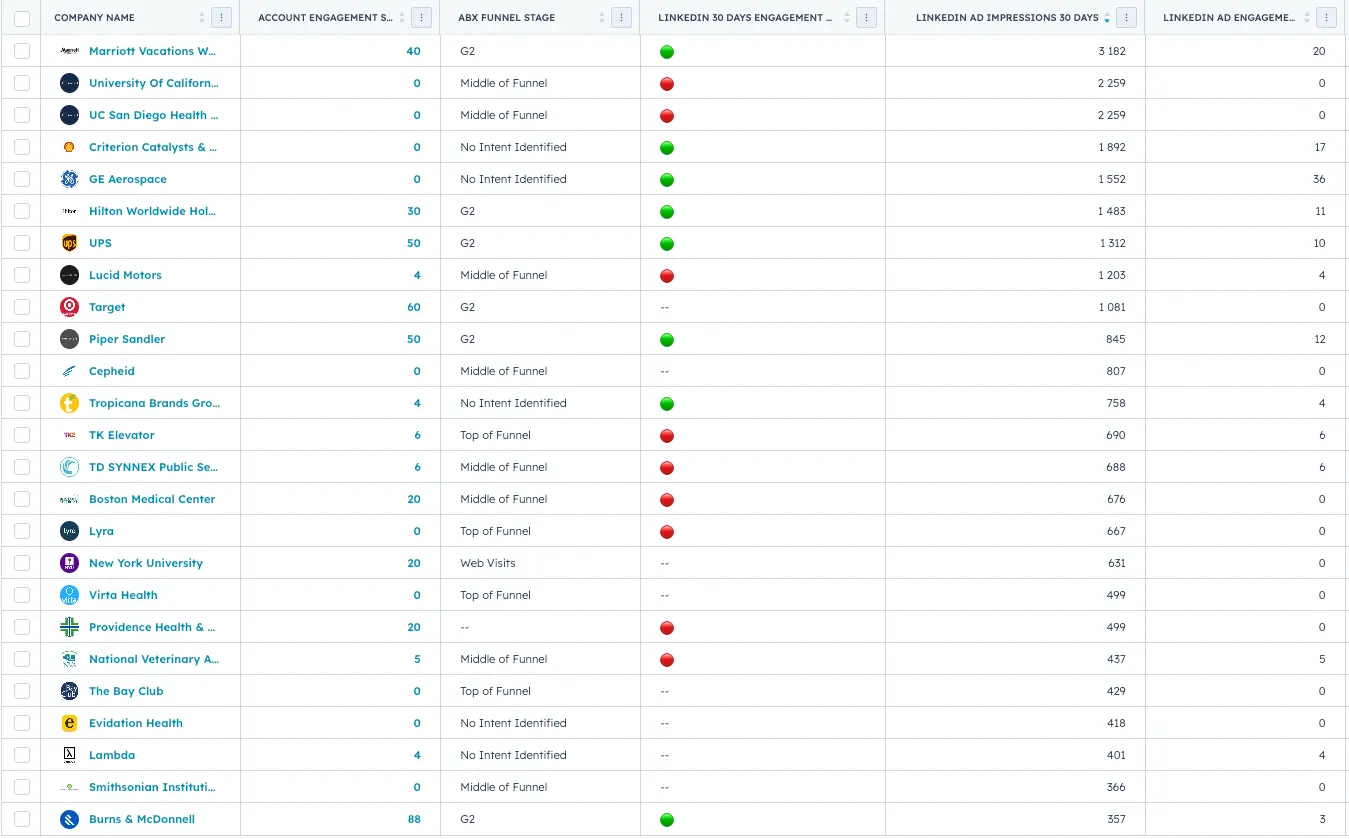
Here's the proof that it works:
Since we started this LinkedIn ABM initiative a couple of months ago with a team of three BDRs, we've generated a pipeline of $1.5 million.
Launch your ABM campaigns on LinkedIn
LinkedIn is the ideal platform for account-based marketing. Not only is it the most-used platform by professionals and decision-makers, but it offers advanced targeting options to hone-in on high value accounts through ads.
Follow this framework to align sales and marketing, then turn LinkedIn into a lead generation machine-one that grabs the attention of your prospects and primes them to become sales-ready.
Need help tracking attribution and proving the influence of LinkedIn ABM on pipeline? Fibbler does exactly that. Identify who's viewed or engaged with your ads, including which CRM leads have been influenced by your campaigns.
That's valuable insight to bring to bi-weekly feedback meetings and adjust your strategy to double-down on what's working-and cut whatever isn't.
LinkedIn ABM FAQs
What is ABM on LinkedIn?
Account-based marketing (ABM) on LinkedIn is a strategy where marketers target specific high value accounts. LinkedIn's targeting tools let you reach decision-makers at those accounts based on job title, company size, and industry, so you can reach your ideal customer profile and share content that encourages conversion.
What is ABM in marketing?
ABM is a marketing strategy where businesses target a specific set of high-value target accounts that fit an ideal customer profile. It requires alignment between marketing and sales to identify what a lead looks like, and what content or support you can offer to help them progress through the sales funnel.
What is the ABM marketing strategy?
Instead of casting a wide net, the ABM marketing strategy aligns marketing and sales to engage stakeholders working at companies that fit your ideal customer profile. B2B companies use the ABM strategy to pinpoint who their ideal buyers are and deliver the content they need to convert.
Is account-based marketing worth it?
Account-based marketing is worth it-especially for B2B marketers that target high value buyers. ABM delivers higher ROI than many traditional marketing methods by focusing resources on accounts most likely to generate significant revenue.
Written by

Adam Holmgren
CEO @ Fibbler

See the real impact of your LinkedIn Ads
Fibbler connects your ads data to your CRM so you can see which companies your ads influence and give your execs proof that LinkedIn drives revenue.
Try 30 days for free
See the real impact of your LinkedIn Ads
Fibbler connects your ads data to your CRM so you can see which companies your ads influence and give your execs proof that LinkedIn drives revenue.
Try 30 days for free